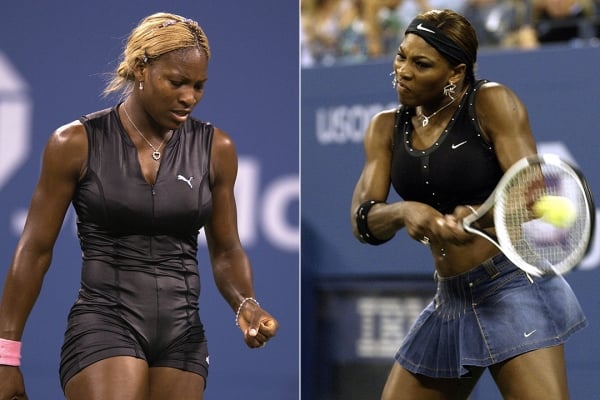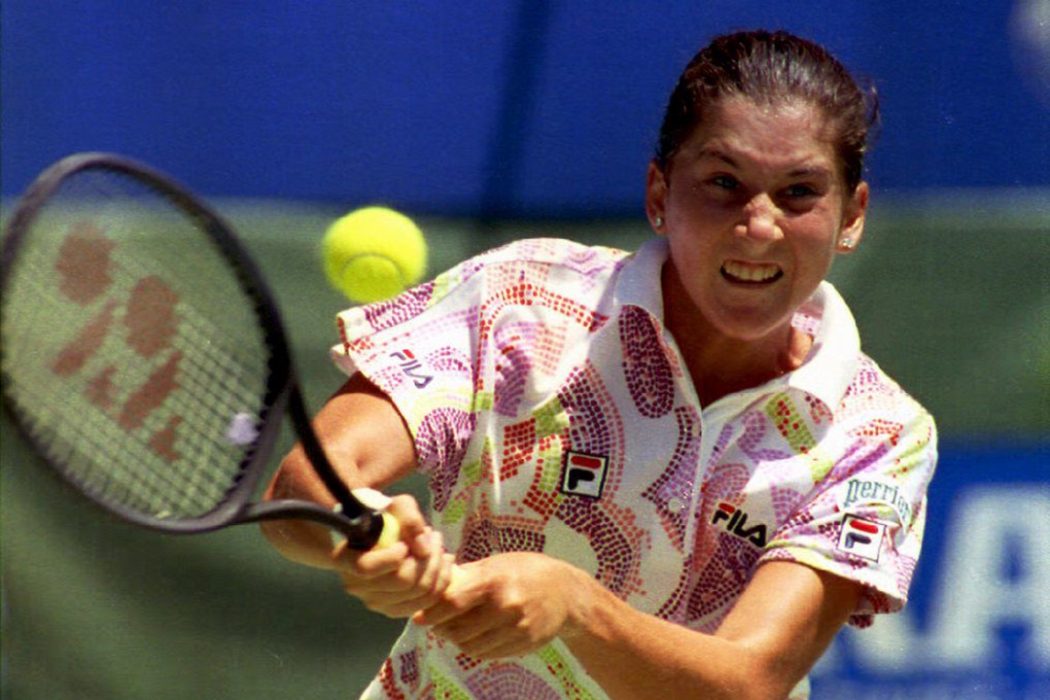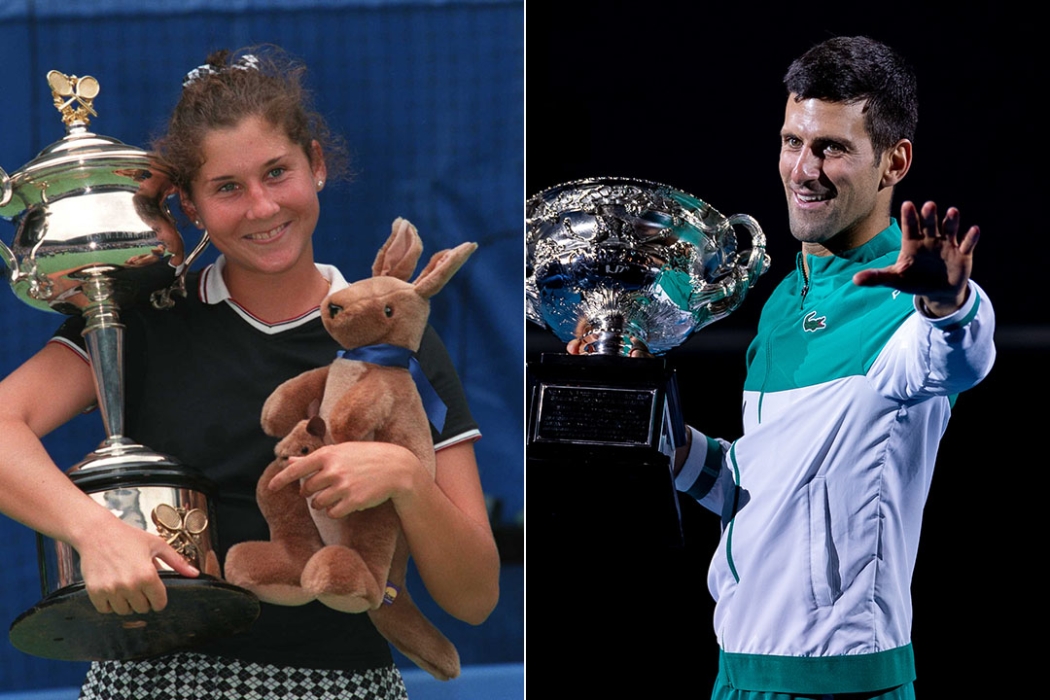The full version of this article first appeared in the June/July 2023 issue of Australian Tennis Magazine, one of the world’s longest-running tennis publications. For more in-depth features, news and analysis, you can subscribe now.
June 2023 marks 50 years since the formation of the Women’s Tennis Association. The Gloucester Hotel in London, on the eve of Wimbledon 1973, was the venue for the first coming together of women players under a single banner, rather than being divided by competing tours.
Although political point-scoring and tournament bans were not entirely relegated to the past, the WTA Tour thrived, almost from its inception, as a showcase for tennis as the richest, most global female sport. On the 50th anniversary of the WTA, a salute to 15 inspirational women (if only we had the space for 50!)
We celebrate five, in chronological order, in the second of this three-part series.
LOVE 15: Most inspiring stars of women's tennis (Part 1)
Monica Seles
No player was so good so young. At 19, the bubbly lefty from an obscure corner of Yugoslavia had the game in her double-handed grip, the owner of eight majors. Upping the power to 11 off both wings, Seles thumped the ball on the rise and her two-handed disguise and sharp angles left opponents reeling.
Accompanied by her genial, cartoonist father, Seles was a captivating figure who thrived in the limelight; her polar-opposites rivalry with Graf was a high-water mark for the women’s game.
But the teenager’s fast-track journey to tennis immortality was shockingly derailed by an on-court knife attack at Hamburg in 1993. No player has had to recover from such an unprecedented trauma.
Though struggling with depression, disordered eating and the death of her father, Seles made four major finals in her second career, winning AO 1996 to extend her Melbourne Park reign to an unbeaten four straight titles.
Future No.1s Ana Ivanovic and Jelena Jankovic, as well as Aussie No.1 Jelena Dokic, all emerged from the tennis backwater of former Yugoslavia; hard to imagine they would have risen to the top without the example of Seles.
Venus Williams
Madison Keys can recall the very moment she was inspired to play tennis: seeing Venus on TV in a silver dress. The teenaged Williams made a grand impression: statuesque and long-limbed, with a memorable moniker, beaded braids, powerful strokes and enigmatic personality – less outwardly expressive than younger sister Serena.
Though Serena would outstrip her haul of Slam titles (23 to seven), Venus never allowed herself to become bitter at being upstaged by her sibling. But as Serena acknowledged in her farewell event at the 2022 US Open, “Without Venus, there is no Serena.”
If it wasn’t for big sis setting sky-high standards, Serena would not have strived as she did. Venus won their Wimbledon 2008 and US Open 2001 deciders – the latter the first prime-time women’s major final, a spotlight the sisters had earned and inspired.
In 2007, Venus’s public campaign for pay parity at Roland Garros and Wimbledon was instrumental in the two hold-out majors granting equal prize money. As Wimbledon 2007 champion, Venus was the first woman to take home the same prize money as the men’s champion, Roger Federer.
Serena Williams
Leading major winner in the professional era (23 singles) and the most successful over-30s champion (10 Grand Slams), Serena is a byword for female achievement and empowerment.
At her curtain-call event, the 2022 US Open, the 40-year-old was eulogised by Billie Jean King and Oprah Winfrey while Tina Turner blasted ‘Simply The Best’. Her success, longevity and force of personality has rippled beyond the court, shifting the zeitgeist on race, gender, body image, self-belief, aging, on-court presence, mother-athletes and more.

High theatre on court, Serena bristled with all-court aggression and fight. Three times she won Grand Slams from match points down – at AO 2003, AO 2005 and Wimbledon 2009. No one else has done it more than once.
Owner of the greatest serve in the history of the women’s game, she topped the ace tally at Wimbledon 2012 – men players included. AO 2003 was witness to the ‘Serena Slam’ (four straight majors) and she won her last major at AO 2017 aged 35 while several weeks pregnant.
As her final conqueror Ajla Tomljanovic put it after playing the match of her life to send Serena into retirement: “She embodies that no dream is too big.”
Maria Sharapova
Her legacy tarnished by a doping ban, she was no Miss Congeniality in the locker room. But few, if any, champions have been as driven as Maria Sharapova.
At seven, she left her mother in Russia while emigrating with father Yuri to the tennis sweatshop of Florida, where he dreamed of turning his daughter into a champion. As Maria noted in her memoir, Unstoppable, there was no Plan B.
RELATED: Retiring Sharapova shone at Australian Open
An overnight sensation as the Wimbledon 2004 champion at age 17, she also took the WTA Finals that year, beating Serena Williams in both deciders. She would never again top the American in the next 19 charged encounters over 15 years. But only Sharapova followed Serena with a career Grand Slam and she did it in typically defiant style, collecting Roland Garros titles in 2012 and 2014, despite likening her claycourt form to “a cow on ice”.
As the highest-paid female athlete in her late teens-early 20s heyday, associated with many prestige brands, the Siberian-born star was a highly visible brand ambassador for tennis as the top female sport.
Kim Clijsters
Newly appointed president of the International Tennis Hall of Fame, former singles and doubles No.1 Clijsters was a delight to watch for her pacey, powerful, athletic game – her splits out wide emulated by Novak Djokovic – and sporting nature.
The beloved Belgian is unique in winning more majors as a mother (three) than before (one). She went 0-4 in Grand Slam finals before breaking through at the 2005 US Open but was an unfulfilled No.1, leaving the game at age 23 and welcoming daughter Jada in early 2008.
Following an invitation to test the new roof over Wimbledon’s Centre Court in a mixed doubles exhibition, she regained her drive for the game and won the 2009 US Open as an unranked wildcard, in just her third pro event as a touring mum. Vision of Jada dancing around the trophy at Flushing Meadows inspired other players to believe motherhood needn’t mean the end of a pro tennis career.
Clijsters followed Slam-winning Aussie supermums Evonne Goolagong Cawley (1980) and Margaret Court (1973), who also made dominant returns.
But since Court’s time predated computer rankings, Clijsters is the only mother to officially rank No.1.
Serena Williams, Steffi Graf and Iga Swiatek are the cover stars of the June/July 2023 issue of Australian Tennis Magazine.

